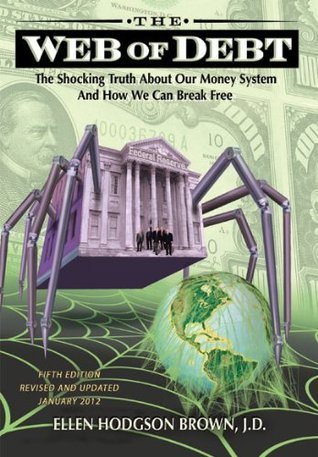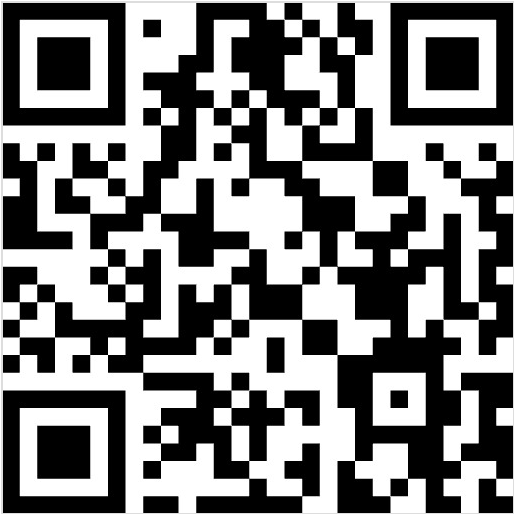Last updated on 2025/07/14
Web Of Debt Summary
Ellen H. Brown
A Guide to Understanding America's Monetary System
Last updated on 2025/07/14
Web Of Debt Summary
Ellen H. Brown
A Guide to Understanding America's Monetary System
Description

How many pages in Web Of Debt?
520 pages
What is the release date for Web Of Debt?
In "Web of Debt," Ellen H. Brown unveils the intricate and often hidden mechanisms of our financial system, revealing how the creation of money and the role of banking institutions profoundly affect economies and societies. With a compelling narrative that intertwines historical context with contemporary analysis, Brown challenges the conventional understanding of debt and deficits, urging readers to reconsider the very foundations of economic policy and the power dynamics at play. As she exposes the web of influence that governs our money supply, this thought-provoking exploration serves not only as a critique of the current system but also as a call to action for reform, inviting readers to imagine a world where financial sovereignty can be reclaimed and a sustainable economy can flourish. Prepare to question the status quo and embark on a journey that could change your perspective on money forever.
Author Ellen H. Brown
Ellen H. Brown is a prominent American lawyer, author, and public advocate known for her extensive work on financial reform and her critical examination of the monetary system. With a background in law and a keen interest in fiscal policy, Brown has devoted much of her career to educating the public about the mechanisms of banking, debt, and economic justice. She is best recognized for her bestselling book "Web of Debt," which explores the origins of money creation, the implications of the national debt, and alternatives to the existing financial system. Through her writings and public appearances, Brown aims to empower individuals with knowledge about economic issues, advocating for transparency and accountability in financial practices.
Web Of Debt Summary |Free PDF Download
Web Of Debt
Section I | THE YELLOW BRICK ROAD: FROM GOLD TO FEDERAL RESERVE NOTES
In "Web of Debt," Ellen H. Brown draws an intriguing parallel between the well-known tale of "The Wizard of Oz" and the historical evolution of the American financial system. The metaphorical journey along the Yellow Brick Road represents the transition from a gold-backed currency to the current system dominated by the Federal Reserve and private banking interests. The book explores numerous historical events and economic theories that have shaped the United States' monetary landscape. 1. The allegorical underpinning of "The Wizard of Oz" was first articulated by Henry Littlefield, who suggested it served as a commentary on the Populist movement. Characters in the narrative embody figures from this era, such as the Scarecrow representing farmers battling economic oppression and the Tin Woodman symbolizing industrial workers trapped in a mechanized world. The story teaches that true courage, intelligence, and heart reside within those who seek change. 2. The economic struggles of the 1890s, marked by high unemployment and farmer debt, prompted organized protests, such as Jacob Coxey's march on Washington demanding money reform. Much like Dorothy and her companions, who discover their own agency, the populist movement asserted that ordinary citizens could harness power to challenge financial injustices, driven by the realization that government-issued currency could alleviate systemic issues. 3. The Gold Standard, favored by banking interests, restricted the money supply, suffocating economic expansion, and exacerbating debt cycles. Advocates like William Jennings Bryan argued for inclusivity of silver to expand the currency available to the working class. However, the monetary improvements proposed by Coxey's army were sidelined as the power dynamics shifted toward private banking interests. 4. The Federal Reserve, which emerged in 1913, has been critiqued as a device that enshrines the monetary dominance of private entities. Brown asserts that by allowing banks to create money based on debt, the nation succumbs to an ongoing cycle of inflation and increased wealth concentration. The idea that "money is a public good" has been widely neglected in favor of a model that prioritizes the interests of financial elites over the broader public. 5. Through historical vignettes, including the British response to American financial independence efforts and America's cyclical battle over banking practices, Brown highlights how power shifts between state control and private monopolies influence economic health. Each shift often occurs during times of crisis, prompting debates on monetary policies and the role of government in currency issuance. 6. Brown's analysis culminates in the argument for a return to government-issued currency as a pathway towards economic independence and prosperity, asserting that abundant resources exist within the nation. The lessons drawn from early American currency practices and the failed promises of the gold-backed system prompt a call for reform and public awareness to reclaim financial sovereignty. 7. The broader implications of Brown's exploration suggest that the seeming permanence of banking institutions is illusory, challenging readers to critically consider who governs the money supply and for whose benefit it flows. In contrast to Dickensian depictions of the dark side of capitalism, Brown's portrait of the American dream is one where collective action, informed by the past, can realign financial systems with the needs of the populace. In summary, "Web of Debt" intricately weaves together narrative, historical analysis, and economic critique, illustrating how the past informs present monetary policy debates and advocating for a future where money serves the common good rather than private interests.
Key Point: Ordinary citizens can harness their power to challenge financial injustices.
Critical Interpretation: As you navigate through life, consider the profound realization that you, much like the characters in 'The Wizard of Oz,' possess an innate power to effect change in your community. Just as Dorothy and her friends discovered their courage, intelligence, and heart, you too can tap into your unique qualities to confront systemic financial injustices. Whether it's advocating for transparent monetary policies or joining grassroots movements demanding fair banking practices, your voice can help reshape the narrative around our financial systems. Embrace the idea that collective action, driven by informed citizens like yourself, has the potential to create a more equitable economy where the needs of the many are prioritized over the interests of a few.
Section II | THE BANKERS CAPTURE THE MONEY MACHINE
In “Web of Debt,” Ellen H. Brown examines the historical struggle between the American populace and a banking elite that has progressively consolidated power over the economy. This struggle is revealed through a combination of historical anecdotes and economic theory, focusing on key themes such as the influence of bankers on government actions, the manipulation of monetary systems, and the implications of debt-driven economies. 1. The Concept of Home: The chapter begins with a nostalgic homage to the American dream embodied by Dorothy in “The Wizard of Oz.” Dorothy's desire to return home resonates with family farmers during the 1890s, a time marked by widespread evictions and foreclosures orchestrated by financial elites. The "Bankers Manifesto of 1892" is introduced as a call to disenfranchise the working class, suggesting systemic exploitation by bankers to ensure political compliance. 2. The Political Landscape: The influence of organizations like the Farmers Alliance and Knights of Labor is likened to the characters of the Scarecrow and Tin Woodman, representing working-class power. The “Bankers Manifesto” outlines a strategy to divert public attention from substantive issues toward trivial political conflicts, ensuring that true power remains in the hands of financiers. 3. The Era of Protest: Historical protests, such as Jacob Coxey’s “Petition in Boots," highlight attempts to restore financial fairness. Coxey’s proposals sought governmental funding for public works without burdensome debt, directly challenging the established banking order. His assertions were met with harsh resistance, emphasizing the lengths to which banks would go to maintain control. 4. The Rise of Political Manipulation: The narrative tracks the intertwining histories of populism and the establishment of a central banking system, with William H. Harvey and William Jennings Bryan advocating for monetary reform. Despite their efforts, big-money interests consistently undermined their movements. 5. The Federal Reserve’s Control: As the chapter delves into the establishment of the Federal Reserve in 1913, it exposes the banking sector's triumphant manipulation of the system, transforming public funding into private gain. President Wilson's regret over his support for the Federal Reserve highlights the disillusionment many faced. 6. Speculation and Financial Collapse: The Great Depression serves as a backdrop for exploring speculative financial practices and the role of derivatives in market manipulations. The chapter illustrates how easy credit led to rampant speculation, resulting in a cascading financial collapse that devastated the middle and working classes while empowering the financial elite. 7. The Role of Taxation: The introduction of the income tax via the Sixteenth Amendment symbolizes a shift in economic control, as it fortified the government's reliance on the banking system for budgetary needs and consolidated financial power. 8. Persistent Economic Inequality: The author warns that central banking and fractional reserve lending create an environment where debt becomes the normal state, leading to ever-increasing economic disparity. The interests of the wealthy dominate, exemplifying how monetary policy can be used as a tool of oppression. 9. Wright Patman’s Exposition: As a congressional figure unafraid to challenge the status quo, Patman represents the continued struggle against banking power. His investigations and legislative actions point towards a recurring pattern of financial manipulation, calling for accountability and reforms within the banking system. 10. The Present-Day Implications: In the conclusion, Brown warns of ongoing manipulation within financial systems driven by complex instruments like derivatives, underscoring the need for greater transparency and reform in contemporary monetary policy. Without governmental intervention and public awareness, the cycle of exploitation and economic disparity risks persisting. Through these themes, Brown stitches together a powerful narrative that connects historical grievances with contemporary financial realities, urging readers to reevaluate the intersection of money, power, and democracy.
Key Point: Awareness of Economic Control
Critical Interpretation: Imagine standing at the crossroads of history and the future, where the power of your choices shapes not just your life, but the very fabric of society. Ellen H. Brown’s exploration of the historical struggle against banking elites reveals a vital truth: the financial systems that govern our lives are often manipulated to benefit a select few. This insight compels you to recognize that your voice matters in the fight against economic oppression. By understanding the forces at play behind monetary policy, you are inspired to seek transparency and advocate for reforms that empower rather than exploit the population. In doing so, you take a step toward reclaiming the dream of fairness and equality—transforming the narrative from one of victimhood to empowerment. Embrace this journey, for it’s not just about money; it’s about the integrity of our democracy and the collective strength to ensure it serves everyone.
Section III | ENSLAVED BY DEBT: THE BANKERS’ NET SPREADS OVER THE GLOBE
In "Web of Debt," Ellen H. Brown presents an intricate narrative detailing the historical evolution of global financial systems, the manipulation of countries by international financiers, and the resultant socio-economic turmoil, particularly in developing nations. This summary encapsulates key themes and principles embodied in the text. 1. Once reliant on the gold standard, countries faced detrimental impacts as banknotes disconnected from gold caused systemic monetary instability. Eleazar Lord's observations during the 1860s illustrated that when gold left nations to settle foreign debts, it led to widespread economic depression and bankruptcy. 2. The presidency of John F. Kennedy marked a significant departure from Wall Street's influence, as he advocated for low-interest loans and economic development for Third World countries. His initiatives stood against the neoliberal policies promoted by the international banking community, prioritizing domestic sovereignty and government planning over foreign exploitation. 3. The Nixon administration's decision in 1971 to sever the dollar's link to gold initiated an era of "fiat" currency, distorting monetary policy and embedding a cycle of global debt dominated by banking interests. This floating exchange rates system not only destabilized currencies but also exacerbated economic crises in various nations, particularly in the developing world. 4. Countries that succumbed to the allure of foreign loans, such as Mexico, often found themselves ensnared in a debt trap, struggling under burdensome interest rates imposed by global financial institutions. The subsequent implementation of IMF policies led to austerity measures that further impoverished populations. 5. The rationale behind currency crises is analyzed, debunking the notion that hyperinflation mainly stems from excessive government money printing. Instead, irresponsible speculation on currencies led to economic turmoil, dismantling livelihoods and leaving local populations with even greater dependency on foreign capital and markets. 6. An examination of the 1997 Asian Financial Crisis highlights how predatory financial maneuvers targeted economically stable nations, sparking rapid currency devaluations that destabilized entire regions, resulting in widespread poverty and social unrest. 7. The narrative shifts to showcase successes achieved through models that eschewed reliance on foreign investments, spotlighting countries like Malaysia that, under Prime Minister Mahathir Mohamad, resisted IMF impositions by implementing strict capital controls. 8. Brown draws parallels between the historical economic exploitation exemplified by colonialism and contemporary financial imperialism, arguing that international financial institutions impose similar systems of control through loans and conditionality. 9. The text emphasizes the economic resurgence of nations like China and India, driven not by foreign capital but by government-owned banking systems that prioritize local development and circumvent the debt trap set by international financiers. 10. Ultimately, Brown argues for a sovereign credit system reminiscent of Lincoln's Greenbacks, wherein governments have the authority to issue currency aligned with national interests, as a solution to the ongoing cycles of debt and economic subjugation. Through this sweeping historical analysis, Brown offers a compelling critique of the global financial system's failures and advocates for reform aimed at restoring economic sovereignty and self-determination for nations worldwide. This synthesis of themes not only underscores the perils of unchecked financial manipulation but also presents pathways toward sustainable economic independence.
Key Point: Advocating for a Sovereign Credit System
Critical Interpretation: Imagine the potent potential of a world where governments, just like Lincoln did with his Greenbacks, wield the power to issue currency that resonates with national interests rather than being shackled by international financiers. This idea can ignite within you a fervent belief in self-determination and economic sovereignty, transforming how you perceive money's role in society. As you navigate your life, envision embracing initiatives that promote local investment and communal growth, resisting the allure of external debt that enslaves nations. This key point from Ellen H. Brown's 'Web of Debt' can inspire you to engage in economic activism, advocate for policies supporting community financing systems, and even think creatively about how you manage your own financial resources, enabling a move towards a more equitable and sustainable society for all.
Section IV | THE DEBT SPIDER CAPTURES AMERICA
In Section IV of "Web of Debt" by Ellen H. Brown, the author explores the ominous reality of America's spiraling debt and the financial mechanisms that underpin a system viewed as increasingly exploitative and unstable. The narrative mirrors a fairy tale, likening the U.S. economy to a captured entity ensnared by a financial "debt spider"—an allegory for banking elites exploiting the citizenry. 1. The United States has grappled with mounting debt exceeding $7.6 trillion, positioning it beyond Third World nations in liabilities. A retired naval intelligence officer, Al Martin, highlights that the total U.S. debt relative to its Gross Domestic Product (GDP) has inflated drastically, indicating severe economic mismanagement and a foreboding trajectory toward national bankruptcy. The cycle of merely paying interest on this debt is unsustainable, and eminent figures warn of a looming financial catastrophe. 2. Observations from various analysts indicate a shift toward an economic model characterized as "debt peonage," where citizens become ensnared in a system designed to service the elite. This manifests through tools like credit cards and home equity loans that trap individuals in endless cycles of borrowing, blurring the lines between ownership and servitude. Consequently, the working class faces mounting challenges as bankruptcy protections are diminished, particularly through recent changes in bankruptcy laws which compel more individuals into repayment plans instead of discharging debts. 3. The disparity between the ultra-wealthy and the average American has intensified, evidenced by statistical revelations from the Federal Reserve—demonstrating that the wealthiest segments possess an ever-larger portion of national wealth while the bottom percentages struggle for survival. The concept of “debt peonage” is reinforced, suggesting that the structure of economic recovery initiated by elites leads to systemic inequality and a weakened middle class. Warren Buffett projects that America, instead of evolving into an "ownership society," is regressing to a “sharecroppers’ society,” where economic agency lies with the ultra-wealthy. 4. The evolution of bankruptcy law has favored financial institutions over individual debtors, enforcing stricter repayment mandates and eradicating necessary protections, thus solidifying the grip of creditors on borrowers. The complicity of government legislation reflects a trend toward prioritizing the interests of big banks at the expense of ordinary citizens—further entrenching systemic risks within the financial landscape. 5. The chapter highlights the complexities within the mortgage industry, showcasing that the illusory promise of home ownership has become a deceitful trap where homeowners are financially burdened by inflated property prices and deceptive loan structures. The abandon of classical advice against neglecting financial prudence contributes to a national debt overload, significantly impacted by speculative lending practices on behalf of banks. 6. The narrative critiques institutions like Fannie Mae and Freddie Mac, presenting their operations as catalysts amplifying the housing bubble through risky financial instruments that threaten economic music while promoting an atmosphere of widespread ignorance on behalf of both investors and the general public. 7. Brown addresses the looming crisis of derivatives—a financial instrument that has become a double-edged sword, exacerbating market volatility while creating a facade of security. The interconnection of these financial products reflects systemic vulnerabilities that could result in catastrophic market failures should a crisis occur. 8. The author speculates that the impending collapse of the banking system may be facilitated by a perfect financial storm characterized by both inflation and deflation, which portends grim consequences for both the banking sector and individual borrowers. 9. Ultimately, the chapter ends on a note emphasizing the need for systemic reform to represent the interests of the many instead of the few. It invites readers to envision an economy that acknowledges fairness and equity, breaking free from the entrapment of debt and reclaiming their economic power and sovereignty. The text serves as a critical investigation into the fragility of the American economic system, urging readers to understand the implications of debt, systemic inequality, and the urgent need for courageous and transformative monetary reforms.
Key Point: Reclaiming Economic Power and Sovereignty
Critical Interpretation: Imagine waking up each day knowing that you have the power to break free from the suffocating grip of debt, not just for yourself, but for your community and future generations. This chapter challenges you to recognize the urgent need for systemic reform—a call to action that resonates deeply within the fabric of your daily life. As you navigate your finances, whether it's resisting the allure of credit cards or questioning deceptive loan offers, envision a future where economic agency belongs to the many, not the privileged few. Let the cautionary tales of this 'debt spider' inspire you to seek knowledge, engage in advocacy for equitable policies, and foster a culture of financial literacy that empowers everyone to reclaim their rightful economic sovereignty.
Section V | THE MAGIC SLIPPERS: TAKING BACK THE MONEY POWER
In "Web of Debt," Ellen H. Brown explores the concept of reclaiming monetary power, drawing parallels between Dorothy’s journey in "The Wizard of Oz" and the potential transformation of society from scarcity to abundance. This transformation hinges on rethinking our monetary system and exploring alternative models that facilitate communal prosperity rather than individual debt. The following key points encapsulate her insights: 1. The Power of Positive Thinking: Just as Dorothy transitions from a black-and-white world to a colorful one, the shift from a scarcity mindset to one of abundance requires a fundamental change in perspective. Historical figures like Franklin Roosevelt and Andrew Carnegie emphasized the power of positive thinking in achieving financial success, suggesting that individual attitudes significantly influence collective reality. 2. The Failure of Scarcity: Despite technological advances that could support universal abundance, systemic issues upheld by a private banking cartel perpetuate petulance and disparities. The ability of banks to create money through debt creation leads to an unsustainable economy, where individuals must continually borrow to keep the system afloat. 3. Localized Financial Innovations: The narrative explores successful community currency projects, such as Professor Giacinto Auriti’s "simec" in Italy and the Ithaca HOURS in New York, which demonstrate effective barter and exchange systems that circumvent traditional debt mechanisms. These models showcase how communities can create wealth and stimulate local economies without relying on externally issued debt. 4. Historical Lessons on Currency: Brown reflects on various alternative currencies throughout history, including the Liberty Dollar and community-based currencies in times of crisis. The Grameen Bank’s micro-financing model in Bangladesh is highlighted as a successful case of democratizing financial services and empowering individuals through collective ownership. 5. Critique of Traditional Banking: Brown argues that the current monetary system, dominated by private banks, inherently favors the wealthy while disenfranchising the general populace. The need for reform is evident, with a call to return the power to create money to the government, thus establishing a currency system that promotes equitable economic growth. 6. The Relationship Between Debt and Prosperity: The discussion about debt—how it limits access to resources and perpetuates inequality—is central to Brown's argument. She posits that monetary reform is not merely about changing who issues currency but about rethinking the systems that govern the flow of money and how it is utilized in society. 7. Proposed Solutions: Brown advocates for a new economic blueprint that promotes transparency in monetary policy, facilitating direct government issuance of money to fund public goods and services without incurring debt. This reimagining of financial responsibility emphasizes that a society's wealth should circulate within its community rather than be captured by private interests. 8. The Role of Public Empowerment: For meaningful change to occur, the public must be engaged and informed. A grassroots movement aiming for clarity in monetary practices can empower citizens to hold their leaders accountable and participate actively in reforming the financial landscape. In conclusion, "Web of Debt" articulates a compelling narrative that encourages a paradigm shift in how we perceive money and community wealth. By learning from historical precedents and advocating for systemic change, Brown offers a roadmap toward a more equitable and abundant future.
Key Point: The Power of Positive Thinking
Critical Interpretation: Imagine standing at the crossroads of your own journey, feeling the weight of the world’s economic struggles. But then, just as Dorothy stepped out of her grayscale life into the vibrant world of Oz, you have the power to shift your perspective from a scarcity mindset to one of abundance. This chapter inspires you to embrace the notion that your thoughts shape your reality. By fostering a belief in the possibilities of prosperity and collective growth, you can transform not only your life but inspire those around you to envision a community thriving in abundance, free from the constraints of individual debt. This shift is not merely a hopeful dream; it’s a call to cultivate positive thinking as a foundation for meaningful change in your life and the world.
Section VI | VANQUISHING THE DEBT SPIDER: A BANKING SYSTEM THAT SERVES THE PEOPLE
In "Vanquishing the Debt Spider: A Banking System That Serves the People," Ellen H. Brown draws parallel narratives from "The Wonderful Wizard of Oz" to reveal the intricacies and challenges of the modern banking system, particularly as it pertains to national sovereignty over money creation. She highlights the historical struggles associated with currency and financial authority in the U.S., linking it to the ongoing challenges of debt and control by banking cartels. 1. Restoring National Sovereignty: Brown emphasizes that the power to issue currency is fundamentally a governmental right, asserting that the creation of money should not lie with private banks. Historical figures like William Jennings Bryan echoed this sentiment during his campaign, arguing that a return to constitutional money issuance by the government would facilitate numerous reforms and restore economic justice. 2. The Role of a National Bank: Advocating for a true national banking system, Brown suggests abolishing the Federal Reserve or reconstituting it to genuinely serve the people. This would allow Congress to directly fund the government and infrastructure projects instead of relying on bond financing that perpetuates the federal debt. 3. Commercial Lending and Bank Profits: The text explores the current banking paradigm where commercial banks create money through loans, arguing that transferring the money creation function to the government would promote greater economic fairness. This would limit banks to their traditional roles as intermediaries that manage existing funds rather than creating money out of debt. 4. The Crisis of Banking Dependency: Brown references proposals for monetary reform, like the 100 Percent Reserve Solution, where banks would need real capital backing every deposit. Such reforms are aimed at reducing the banks' ability to create money irresponsibly and avert the banking crises that lead to broader economic collapse. 5. The Subsequent Financial Crisis: The narrative connects these historical and theoretical discussions to the more recent financial crises, including the subprime mortgage crisis and the inability of banks to generate revenue from bad loans without massive government bailouts. This cycle perpetuates financial instability, prompting criticism of the systemic risks inherent in the current banking model. 6. The Need for a New Monetary Model: Brown argues for the establishment of an honest monetary system that prioritizes the public good, suggesting that a government-issued currency could alleviate taxes and public debt, stimulate economic growth, and fund essential services. This aligns with the idea that financial systems should benefit society rather than the elite few controlling monetary mechanisms. 7. Calls for Political Engagement: To effect change, Brown encourages grassroots political movements that advocate for monetary reform. She suggests that citizens can reclaim their financial system by demanding a redefinition of currency issuance laws, conducting independent audits of the Federal Reserve, and considering public ownership of banks. 8. Envisioning a Debt-free Future: Ultimately, Brown presents a vision where the government creates money for public welfare without the burdens of interest or taxes. This vision is not just futuristic; it is rooted in historical practices that ensured labor and community needs could be met without the strangling effects of compounded debt. In essence, Brown’s narrative calls for a significant overhaul of the banking system to create a public-centered financial model that promotes national sovereignty, economic equity, and a more sustainable future, away from the dangers of the current debt-driven financial landscape.










